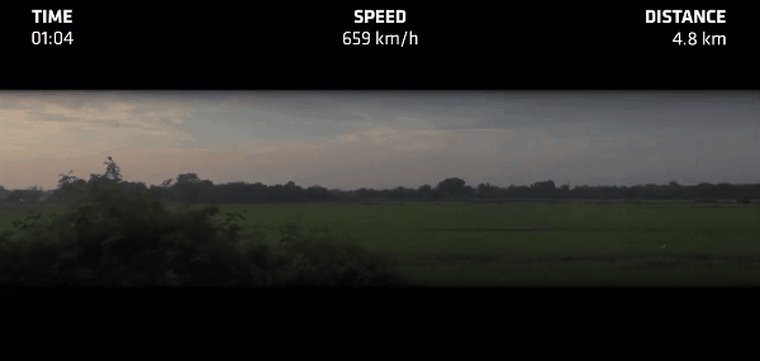Hyperloop technology is still at a relatively early stage of development, and no one knows just what it will be like to zoom through a long, sealed tube at speeds of several hundred miles per hour. But if an eye-popping new video tweeted out by a major hyperloop firm is accurate, the view could be spectacular.
The animated video shows that at slow speeds, passengers would get only a series of momentary glimpses at the outside world as the tube’s small, widely spaced windows align with windows in the passenger pod. But as the pod accelerates, the glimpses begin to flicker faster and faster until they fuse into a single continuous view of the passing terrain.
Or as Josh Giegel, the chief technology officer of the firm, Virgin Hyperloop One, said in the tweet, the “‘zoetrope’ windows could turn both sides of a hyperloop transparent, allowing views outside the pod.”
“Zoetrope” is a reference to a popular 19th-century toy that consisted of a slotted cylinder with images on its inner surface; when the cylinder spins, the images appear to move — in much the same way film works, with static images becoming animated as frames are projected rapidly.
“It’s a super idea, very clever,” Jeremy Stone, an aerospace physiologist and a senior adviser to the Hyperloop Advanced Research Partnership, a Colorado-based nonprofit that advances hyperloop technology, said of the zoetrope windows depicted in the video.
But he said the effect might be hard to achieve, in part because adding windows to hyperloop tubes would be tricky and costly. The walls of the tubes must be thick enough and sturdy enough to avoid being crushed like a tin can by outside air pressure, he said. And the windows would have to be completely leak-proof.
“I struggle to believe it has any chance of working,” said Stone, who formerly worked for Hyperloop Transportation Technologies, a competitor of Virgin Hyperloop One.
Even if these hurdles could be overcome, Stone said passengers might feel uncomfortable as their eyes struggle to track objects whipping past the windows at speeds estimated to be as high 700 miles per hour.
V. Michael Bove, a video display researcher at MIT, said the light through the windows might be too dim to relieve the feelings of claustrophobia that some passengers might experience. “The rider will see really annoying flashing images unless moving at top speed,” he told NBC News MACH in an email.
Stone said video screens displaying scenes of passing terrain might be a better option for hyperloop pods than zoetrope windows. Such “virtual windows” wouldn’t make passengers queasy, he said.
Virtual windows are already showing up in some airliners, and they appear in renderings of hyperloop capsules that Hyperloop Transportation Technologies plans to build.
Whether Virgin Hyperloop One actually puts zoetrope windows in its passenger pods remains to be seen. “With hyperloop, we have the enormous advantage of a blank slate,” Giegel said in an email. “This zoetrope concept is just one of many illustrations of what is possible.”
The idea of hyperloop transportation was first proposed in a 2013 white paper by Elon Musk. Since then several companies, including Virgin Hyperloop One and Hyperloop Transportation Technologies, have begun developing and testing hyperloop technologies.
Numerous hyperloop routes have been proposed, including Dubai to Abu Dhabi and New York to Washington, though it’s not yet clear where or when the first hyperloop will begin operation.

